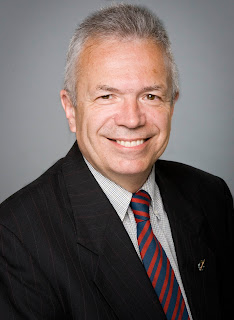Saturday, May 3, 2025
The Dramatic Canadian Federal Election
The Dramatic Canadian
Federal Election
by Maj (ret'd) CORNELIU. CHISU, CD, PMSC,
FEC, CET, P. Eng.
Former Member of Parliament
Pickering-Scarborough East
Canada’s long-awaited, much-analyzed federal election has come and gone. It was interesting to witness what went on, in particular, the unprecedented voter turnout.
With this election, Canada has revealed a completely different political landscape; one not even imagined a couple of months ago. Mark Carney’s Liberals held onto a strong minority government, the Conservatives gained key seats (though they lost a particularly important one; that of the leader), and the NDP was nearly wiped off the electoral map, losing the leader and official party status altogether.
The reality is that the Conservative Party has not succeeded in delivering a government, despite inroads on the electoral landscape. Unfortunately, party leader Pierre Poilievre was surrounded by incompetent people such Jenny Byrne, whose misguided guidance has now lost four elections for the party.
The Conservative Party of Canada lost yet another election due to staff incompetence, personal feuding among conservative leaders, and failing to grasp fundamental and dramatic changes in the geopolitical situation directly involving Canada. They had to win a majority, they were in the lead by more than 25% just a few months ago, and they blew it.
The only choice they had was to win a majority because they do not have anybody in the House to make alliances with. They have never even attempted to build a dialog with other parties. If they were elected as a minority government, they would be defeated at the first opportunity due to lack of alliances. This is not a new situation, it has happened before.
With this last election, we have seen the advent of a two party battle, at least in English Canada. This presented both opportunities and challenges for both the Liberals and the Conservatives. The Liberals’ absorption of 25-50 percent of traditional NDP support has proven to be an effective election strategy. It has broadened the party’s coalition, pushed up its popular vote, and enabled it to win new and different ridings across the country.
For the Conservatives, the decline of the NDP has contributed to their notable gains with younger voters and realignment voters, such that the party’s voter composition is now quite different from what it was in the
Harper era. This has broadened the Conservative voting coalition, pushing the party’s share of popular support up to modern highs as well as increasing the variety of issues and interests reflected in the party’s policy programme. However, it was not enough to propel them into government.
The election results dealt the NDP a historic blow, losing official party status in Parliament. Jagmeet Singh’s resignation after losing his own seat in Burnaby Central marks the end of an era defined by principle, but ultimately not power.
The NDP must now make a defining choice: remain a marginal voice of conscience or rebuild as a serious, disciplined political force capable of eventually forming government.
Influence will be fiercely contested in this new Parliament. However, with no formal status, the NDP will struggle to shape outcomes in a House defined by Liberal-Conservative polarization. This situation does not exclude the possibility that some NDP MPs might join the liberals, crossing the floor, in giving them the coveted majority.
If the federal NDP fails to evolve, it won’t just remain on the sidelines it will be written out of the future of Canadian politics altogether.
The liberals on the other hand, especially their leader, Mark Carney, has pulled off a feat not even contemplated possible. They won a fourth mandate. Mark Carney has been Prime Minister for fewer than 70 days (his win ensured Charles Tupper will remain our shortest-serving PM), so there is still a lot to learn about him.
Prime Minister Mark Carney’s victory in the election signals more than just a change in leadership, it marks the return of competence, clarity, and credibility to Canadian politics, qualities we’ve sorely lacked during the recent Trudeau years.
Voters placed their trust in a leader known not for slogans, but for substance. His calm, confident tone throughout the campaign reflected the kind of steady hand Canadian professionals like myself have been yearning for in uncertain times.
It is heartening to see that appreciation of professionalism has returned to Canadian politics. Canada needs more diverse professional people in a
House populated in recent times, with non-practising lawyers, political scientist and staffers without real-life working experience.
For Prime Minister Carney, the real work begins now. He must move quickly to assemble a team that mirrors the competence he projects and balance the old guard with fresh talent. Beyond managing the economy, he will need to bridge the divides that have deepened across geography, generations, and ideologies.
Canadians didn’t just vote against dysfunction, they voted for something better. The tone has shifted. The expectations are high, Prime Minister Carney will have to shed some of the old and bring in the new to change the rhetoric around the old Trudeau team.
However, for the first time in a long time, it feels like a grown-up is back in charge. Now it is time to deliver.
So what does this all mean for Canada and what happens next?
Hope for the best. You have made it the election of the century
Subscribe to:
Post Comments (Atom)

No comments:
Post a Comment